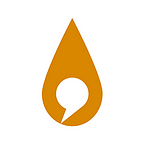Scenes from Seoul (and beyond)
From molten steel to the DMZ theme park, four Aussie journalists share their memorable moments from a recent visit to South Korea.
Four Australian journalists travelled to South Korea in October for the Australia-Korea Journalism Exchange. They met diplomats, business people, scientists, educators, journalists and others — and even toured the Demilitarised Zone bordering North Korea. They also attended the Korea Press Foundation Journalism Conference 2018 in Seoul.
Eryk Bagshaw (Sydney Morning Herald), Phoebe Bowden(Ten News), Andrew Burrell (The Australian) and Elysse Morgan (The Business, ABC) share their impressions and favourite moments below.
Elysse Morgan (host, The Business, ABC):
One of the standout events of the packed itinerary was the POSCO steelworks tour. The size and might of the operation made steel operations in Australia look like a cottage industry. We watched as red hot bricks of molten metal were effortlessly rolled into 500m lengths like they were pastry.
At the entrance to POSCO’s headquarters are two starkly different panoramic photographs; one is a grainy vista of a mountain range skirting an untouched bay dotted with small fishing boats. The next was taken this year and depicts the same mountain range but the bay has been replaced with one of world’s largest steel factories — a shrine to mass industrialisation sat upon 21 square kilometres of reclaimed land. The photos are a perfect metaphor for the rapid change that’s taken place in South Korea since the 1960s, and a testament to the importance of Korean and Australian trade. Several times during our tour of the steelworks we were told of the vital role that BHP Billiton’s technology played in the initial development of POSCO’s mills, and that it is still mostly Australian coal, iron ore and LNG used.
Eryk Bagshaw (federal political reporter, Sydney Morning Herald):
For a country with an insatiable demand for online content, South Korea manages to maintain a staggering level of printed newspaper coverage. More than 380 daily newspapers operate in the country, including more than 30 national titles.
Print readership has fallen from 82 per cent to 16.7 per cent since 2002, a decline more rapid than Australia’s but with a key difference: advertising rates are mandated by the Korean Press Foundation and have remained stable over the past decade — despite smartphones becoming the dominant source of news for South Koreans.
Print advertisers are forced to pay a set rate, regardless of their reduced reach, and are unable to bargain in the way that has seen Australian advertising revenue plummet since the 2000s.
The KPF also functions as a defacto ad-agency, placing advertising, particularly on behalf of the government online, in newspapers and TV. It’s an interesting approach that guarantees a revenue stream but also creates a potential conflict of interest — one that our hosts at the KPF lunch in its headquarters in central Seoul seemed unconcerned about.
The revenue allows the KFP to host regular press freedom conferences, without having to call on the philanthropy that other press foundations do. It also funds a permanent National Press Club forum in the city centre. It’s a model I’ve never come across before, but as budgets get tighter, it might be one that gives media unions, foundations and press clubs around the world food for thought.
Phoebe Bowden (Press Gallery journalist, Ten News)
Crawling through the Third Tunnel of Aggression, dug by North Koreans under the Demilitarized Zone, the powdered coal that had been decoratively rubbed on the walls was obvious. Pyongyang denies trying to tunnel to Seoul, instead insisting that it was all part of a mining operation that just happened to cross the Demarcation Line. President Moon Jae-In is leading a push for the North not to be demonised. Hope runs high in Seoul that peace can be found on the Korean peninsula.
The DMZ is a sweeping expanse of untouched natural beauty, although the area is still littered with landmines. Red markers on the ground highlight the danger posed by concealed explosives; there are an estimated two million buried in the DMZ. In stark contrast, on the outskirts of the DMZ, there is Peace Land, a theme park complete with a rollercoaster. For tourists it seems bizarre in light of the heavily armed border and the ever-present nuclear threat.
Andrew Burrell (WA chief reporter, The Australian)
Robert Kelly (aka BBC Dad) sprung to global fame in March last year when his four-year-old daughter and nine-month-old son gatecrashed a live TV interview he was conducting from his home office in Busan, South Korea.
The associate professor of politics at Pusan National University was discussing the impeachment of South Korean president Park Geun-hye on the BBC when the excitable youngsters burst into his home office. His wife, Kim Jung-A, followed soon after, desperately trying to retrieve them.
The hilarious footage went viral and Kelly became an instant celebrity, better known for the blooper than for his deep knowledge of Korean politics.
But when we visited the American academic in Busan we learnt quickly why the BBC and other media outlets around the world have long been keen to hear his views.
Over the course of our hour-long interview, he hardly drew breath as he explained why he believes there’s little chance that North Korea — which he labelled an “Orwellian gangster fiefdom” — will give up its nuclear weapons anytime soon.
He was also unafraid to question the methods of Donald Trump and South Korea’s Moon Jae-in.
In a country that is understandably desperate for peace, Kelly’s sharp analysis felt like a much-needed reality check. It was also another excuse to watch the YouTube video that made him famous.
